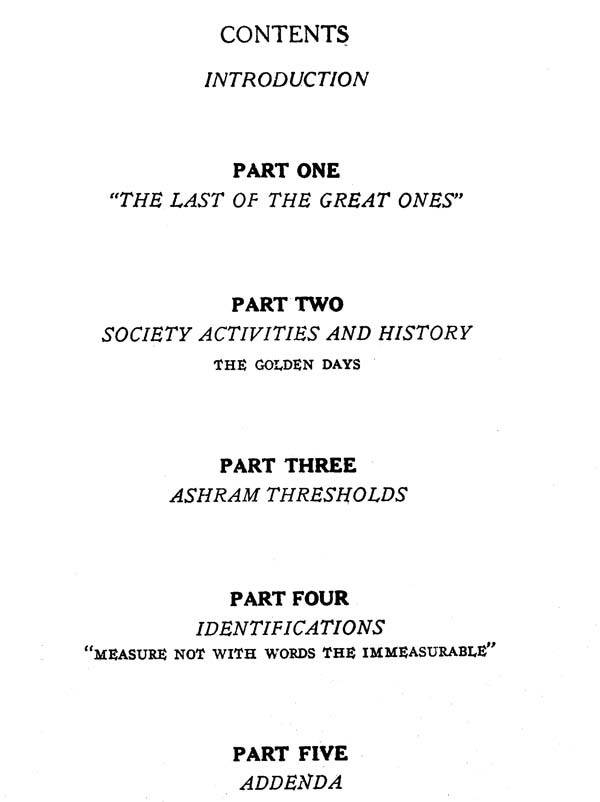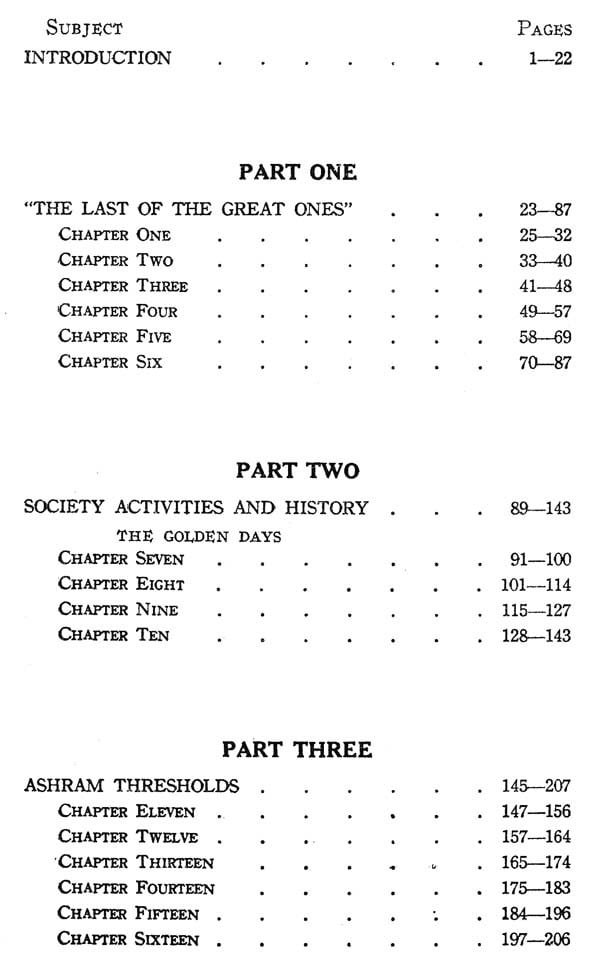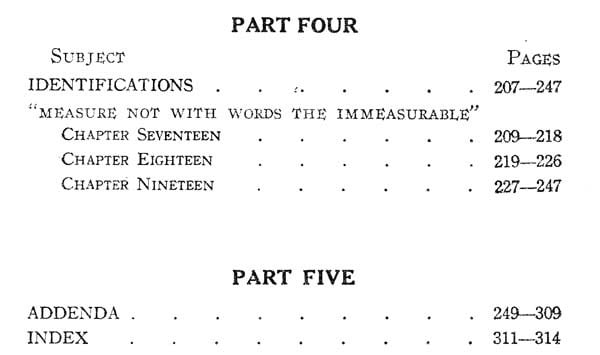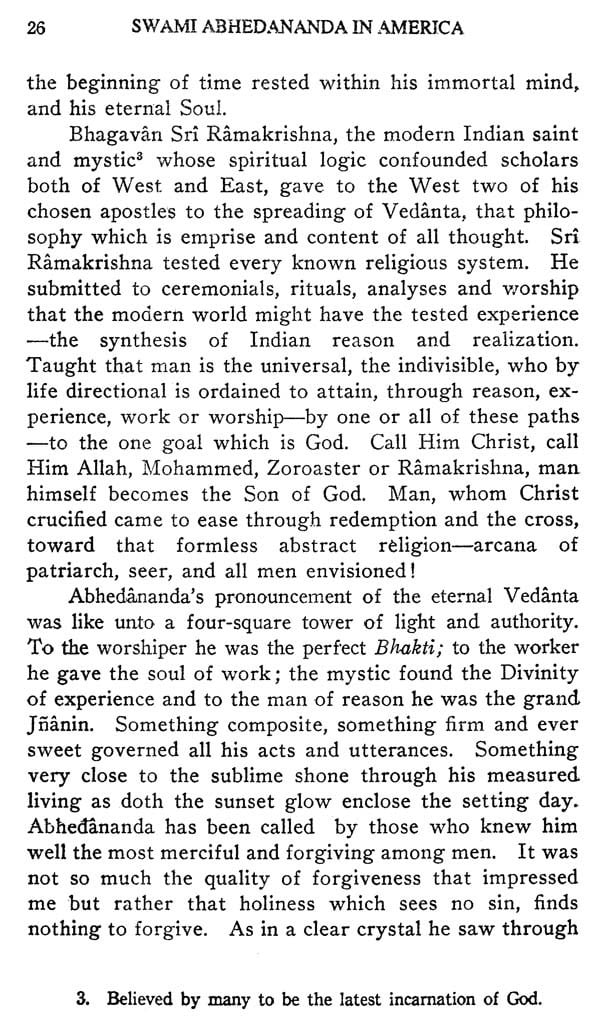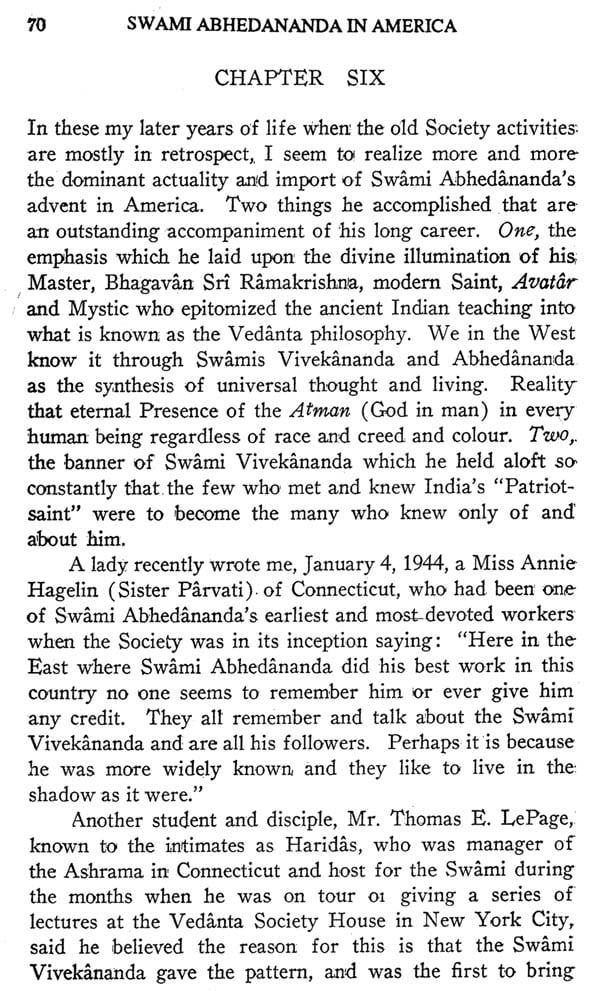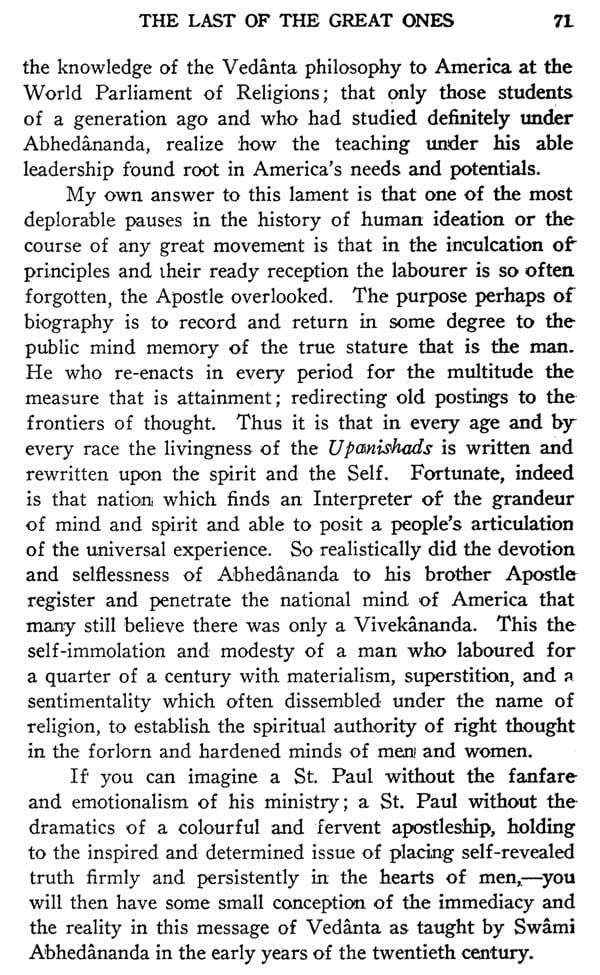
Swami Abhedananda in America
Book Specification
| Item Code: | NCZ133 |
| Author: | Sister Shivani |
| Publisher: | Ramakrishna Vedanta Math, Kolkata |
| Language: | English |
| Edition: | 1991 |
| Pages: | 314 |
| Cover: | HARDCOVER |
| Other Details | 8.50 X 5.50 inches |
| Weight | 450 gm |
Book Description
WITH some hesitation I have yielded to the request of the Author to write an introduction to this book. This is primarily a noble document of devotion and hence, strictly speaking, an introduction should not be necessary. Devotion is beautiful even if it appears unintroduced. Nor does one of the noble Sons of India, Swami Abhedananda, with whom the book deals, need any introduction to India. His contributions to culture and philosophy are well-known there. The author of the book may not be known to the people of India but her writing as set forth here will, I am sure, endear her to the Indian imagination on once it reaches the hands of the Indian people. There is a richness and yet a delicacy of presentation of the subtleties of thought and of the interpersonal relationship as far as she and her Guru are concerned that will be cherished by any Indian devotee. The freedom of style and some of the archaic forms and expressions give a blended flavour of the old and the new, and this would be welcome.
Her writing has stood and will stand on its own merits and its merits are many. It should need no introduction. Even if it did, I have wondered whether I should write it. The book is not in the scientific field in which I am now engaged. I have left behind certain conventions and a certain type of missionary organization. This book mentions similar 'convention and similar organization, though of an entirely different calibre.
All these considerations are probably important, but on the other hand there are considerations which are equally important and which have compelled me. One of the considerations is my acquaintance with the writer and her surroundings. It is a pleasure and privilege to write something. India would like to know the immediate back-ground of the book. I have known the writer, her husband and their family close to two decades and except for the Swami I dare say no one from India has known the family more closely. I have made short and long visits scores of times to their 279 acre Mesa where meet the great Mojave desert and the six thousand feet high Sierra ranges of California.
Half-way ringed by these towering mountains and overlooking the seemingly endless desert, nestles their cottage, utter in its simplicity, more like an Indian hermitage than an American home of feathered beds and electric refrigerators. There whistle the dry desert and the mountain winds through the Joshua, pine, yucca trees and sage brush, there the stars keep their eternal vigil at night in the presence of silent and august hills. It is under this limitless vault of inspiration that the writer has practised Vedanta for many years as a householder with her husband and her children and has mused on her past contact with her teacher.
It is here that the book was written. On the one hand this book would probably be an anachronism to the overactive, nervous and sophisticated section of America and on the other a surprise to those modern Indian chelas of Western life who think science is religion and philosophy idle speculation. Quite some time ago this place was named "Abhedananda Acres". The simple ceremony of dedication over, many sat quietly on the ground drinking in the healing of the hills and the pines. Then came the "chug-chug" sound of the gasoline engine, pumping water, a scarcity in those regions, from the deep bowels of the desert soil and sending it to a highly placed small cement tank from which it was to run by gravity to the pipes and showers of the cottage.
I then thought of the stark resignation to the elements and back-breaking hauling of water from the well to the kitchen in an Indian hermitage. But here Swami's Vedanta and America's science were combined-so it was not really a typical Indian hermitage. Yet there was not in this home the usual evidence of what many Indians would call luxuries. There was a heating stove, simple furniture and a good-sized family library of philosophical and religious books with a sprinkling of scientific literature. Gathered wood was the fuel, kerosene was used for the lamps and heated and wrapped iron bricks were used for keeping warm in bed in sub-freezing wintry nights.
It is to this place that the family originally came as pioneers at a time when there was nothing without but an overpowering Nature and just .a will within to build a home and an "Altar". And they did both. To gain affluence was not the primary objective held before the sons and daughters of this family but they were expected to be practical. It was a fascination to watch the boys take apart and put together old automobiles, mixing mistakes with knowledge and finally making them actually run.
They would drive proud miles in their home-repaired cars to the nearest store. To go ten bare and open miles to the next town to mail a letter or to shop or compare notes with an expert mechanic or printer would not be very unusual. At table or under the balmy evening sky they would listen to or join in discussions, the subjects ranging from politics through science and internationalism to Nirvikalpa Samadhi. The boys are grown up now, two of them have been called by their country in the emergency of war, another is stationed in the Valley. The daughters are away, both of them married.
The writer is one of the company of unusual women who quietly keep alive at their hearths the almost smothered fires of civilization. She is a loving, understanding and yet a strict mother, she is a devoted wife and yet an independent debater, she is an enthusiastic sympathizer with any great cause. Her busy moments are for heavy house-hold work and her easy moments for serious reading and writing where much of her life lies. Her hospitality is strictly of the Indian variety-never pleased until the guest is perfectly comfortable and at ease.
**Content and Sample Pages**
